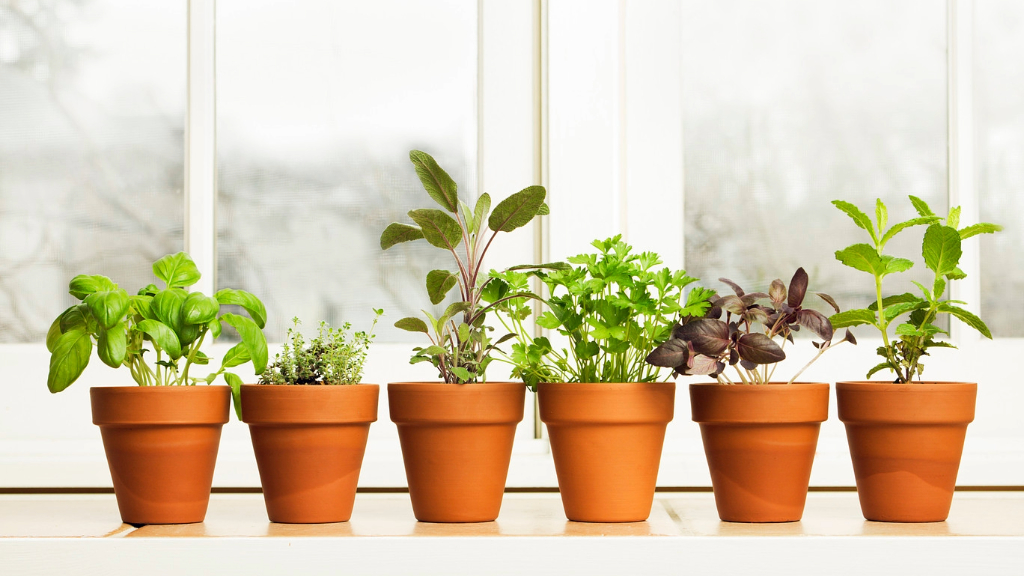Top 10 Questions About Container Gardening


It can be disheartening to have your hard work in the garden go caput due to unforeseen challenges. That's why it is the goal of Gardening Know How to help avoid these issues, or at the very least amend them, by providing the best information possible so your garden will flourish - and that includes answering the gardening questions that plaque us all. Here are the top questions about gardening in containers.
1) How do you water containers?
I find the easiest way to water my containers is to soak the soil until the water runs through the drainage holes in the bottom. For my indoor potted plants, it's a lot less messy to bring them to the sink, or even bathtub depending on the size, for a good soaking. How often you'll need to do this, of course, depends on the plant. But generally keeping the soil moist but not overly wet is just right. If a plant has been neglected, let the water run through the soil for a few minutes.
2) Can you grow vegetables in containers?
Absolutely. Vegetables can do very well in containers if you give them the right conditions: lots of sunlight, adequate water, and fertile soil that drains well. Just be sure that you match the size of the container to the size of the plant, and for those that climb, the pot needs to be near a structure for support. Some veggies that do particularly well in containers are greens, lettuce, peppers, and tomatoes.
3) What type of soil for containers and can I make my own?
The type of soil that you'll need for a container depends on the plants. Generally, you can get away with a standard potting mix. To make your own general potting soil, you can use a lower quality product and mix in compost and perlite to lighten it up, or completely create soil from scratch: six parts sphagnum moss or coir fiber (a byproduct of coconut processing), six parts compost, and four parts perlite.
Sign up for the Gardening Know How newsletter today and receive a free copy of our e-book "How to Grow Delicious Tomatoes".
4) What containers are safe to use (organic)?
Just about any container designed for plants is safe to use. The exception may be wooden containers that have been treated. Those may leach chemicals into the soil. But, otherwise, plastic, terracotta, Styrofoam, stone, and other materials that pots are made of will not hurt plants or contaminate veggies or herbs. If you are considering the environmental impact, you can find biodegradable pots made from organic materials like coconut fiber.
5) What grows well in a shaded container?
Most plants do just fine in containers if you make sure they get enough water, nutrients and space. If you want to grow container plants in a shady spot, look for those that will tolerate less sunlight. Some great options are coleus for gorgeous foliage, begonias and impatiens for pretty flowers, and bleeding heart or ferns for larger plants.
6) Do you need to refresh container soil each year?
You don't strictly need to change the soil in containers every year, but it doesn't hurt to add some additional nutrients before each growing season. For instance, mixing in compost in early spring is an easy way to refresh pots. Or, grow some legumes or cover crops"”clover, peas"”in containers over the winter to re-invigorate the soil. Completely change out the soil every few years.
7) When should you take containers back outside after overwintering?
This depends on the plant, as some can tolerate colder temperatures than other. However, a good general rule is to keep your overwintered pots indoors until there is no more chance of frost outside.
8) How to grow upside down tomatoes in containers?
Upside down tomatoes can be a great space saving gardening technique. You can use essentially any container that you can hang from a height. Use a lightweight plastic pot or bucket with holes in the bottom. With soil in the hanging container, put a small tomato plant in the hole so that the roots will grow up into it and the leaves are hanging down. The hole needs to be big enough for the plant stem, but not so big that soil will drop. This growing technique is best used with smaller varieties, like cherry or grape tomatoes.
9) Can herbs be planted together in the same pot?
You can definitely mix herbs in containers, and it's a great way to save space. Just be sure to put together those herbs that require similar conditions. For example, you can combine Mediterranean herbs like lavender, thyme, rosemary, oregano, and sage because they all need full sun and drier soil. Cilantro, basil, parsley, and tarragon would work well together because they prefer moist soil. An exception is mint. Mint plants tend to overrun other plants, so give them their own space.
10) Do you need a drainage hole in container? What if there isn't one?
Drainage holes are important. Without them soil can get soggy, resulting in rotting, diseased roots. If it's not easy to make holes in a container you want to use, there is an alternative. Create a layer of pebbles or gravel a couple inches deep in the bottom of the container and put the soil on top. This layer will hold excess water without letting the roots get waterlogged.
We all have questions now and then, whether long-time gardeners or those just starting out. So if you have a gardening question, get a gardening answer. We're always here to help.

Mary Ellen Ellis has been gardening for over 20 years. With degrees in Chemistry and Biology, Mary Ellen's specialties are flowers, native plants, and herbs.